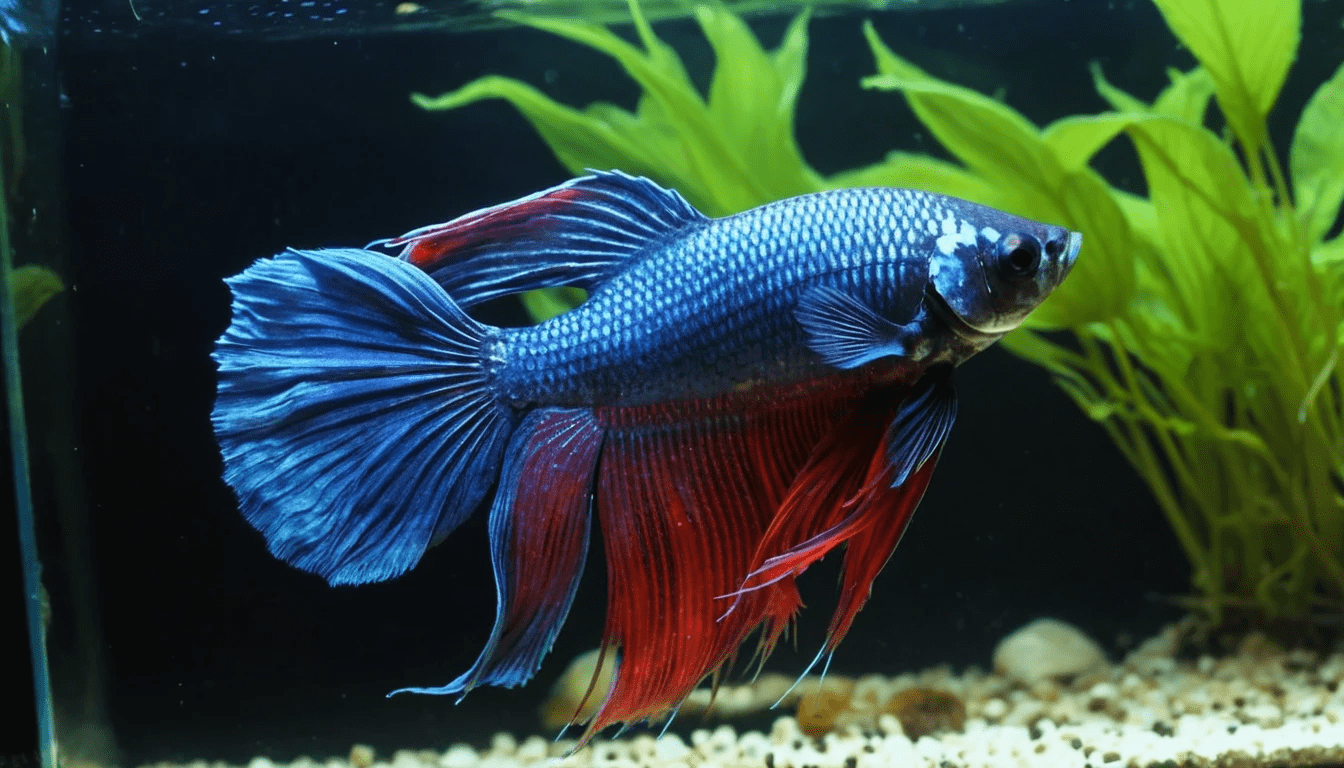If your betta fish develops a white or gray growth on its mouth or body, resembling fluffy cotton, it may be a sign of a fungal infection. Such outbreaks are typically triggered by stressful conditions or poor water quality and can quickly lead to secondary diseases if not addressed.
This article explores various treatments for fungus and provides tips on preventing its recurrence.

What Is a Fungal Infection in Betta Fish?
A fungal infection happens when a fungus starts to grow on a fish, attacking its skin, fins, and even the body. It usually looks like a white, cotton-like slime covering the fish’s external tissues.
A fungal infection often starts as a growth on decaying matter in the aquarium and can quickly attack fish with a poor slime coat or even dead eggs. It also targets lesions caused by injuries. Fish with fungus are often already in a vulnerable state, suffering from other health problems like parasites, a physical injury, or a bacterial infection. Poor water conditions and sudden temperature changes further worsen the risk of this disease, making prevention and proper care crucial.
Fungal infections are highly contagious and can quickly spread to others in the tank, especially if an infected fish is added to the same aquarium. Maintaining good water-quality and reducing stress are key to preventing these commonly contracted infections.
How to Identify Fungal Infections in Betta Fish (Symptoms)
- White blotchy patches on the body and head of the betta.
- Rubbing against objects in the aquarium.
- General illness reactions, such as: Loss of colour.
- Loss of appetite.
- Lethargy.
- Clamped fins.
Common Causes of Fungal Infections
Poor water conditions are a common cause of fungal infections in betta fish, often due to being kept in tiny containers without a heater or filter. Bettas thrive in temperatures of 78–80°F, so if your room is cooler, a heater is necessary. Housing them in an aquarium of at least 5 gallons helps prevent their waste from fouling the water. Regular partial water changes and adding live plants, especially floating plants, can remove toxic compounds and improve their health.
Another reason for fungus is nutrient deficiencies. Fish need a well-rounded diet to fight off diseases, and feeding only the same flakes daily is like eating the same meal every day. To keep fish healthy, provide a wide variety of foods, including fresh, high-quality options, and check the expiration date on containers. Store food properly by splitting it into smaller bags and freezing to maintain freshness. Avoid using wet fingers to remove food, as this can make it moldy, leading to fungus or other diseases.
Possible Cures
It’s important to isolate an infected fish before starting treatment, especially if your betta shares its aquarium with other fish, plants, or critters. Setting up a quarantine or hospital aquarium ensures that medicines don’t harm others. If multiple fish are affected by the infection, either place them all in quarantine or, even better, create a separate quarantine for each. This step is vital since fungal infections are highly contagious.
If caught in its early phases, a fungal infection is relatively easy to cure, so it’s essential to keep a close look for symptoms. In advanced stages, however, the infection becomes harder to manage, and it may not be possible to save the fish from dying.
How to Help Your Betta Recover from a Fungal Infection?
Steps for Treating Fungal Infections
Once a fungal infection is identified, the betta should be isolated for treatment. Follow these steps, but do not continue this treatment method for more than 10 days. If it doesn’t work, consider using the recommended medication:
- Adjust the aquarium temperature to 75°F–77°F if it is not already in this range.
- Add aquarium salt to the water, using 1 tsp per gallon. A recommended product is API Aquarium Salt, available on Amazon.
- Perform an 80% water change daily for the next 10 days, ensuring you add the correct amount of salt as specified.
Suggested Medications
Recommended Medications for Fungal Infections
If earlier treatments have not worked, here are some fungal medications we recommend trying. Always use only one medication at a time:
- Medication with Malachite Green
- Triple Sulfa by API – available on Incredible Pets.
- Erythromycin by API – available on Incredible Pets.
- Fungus Clear by Jungle – available on Amazon.
- FIN & BODY CURE by API – available on Amazon.
When using any of these medications, perform an 80% water change daily, and add the specified dose according to the medication’s documentation.
If one medication fails, finish the course before trying another. Some medications have higher chemical levels, so choose accordingly. When switching treatments, introduce the new medication following the specified doses only if the previous treatment proves ineffective.
In extreme cases, mix aquarium salt with a medication course. Add 1 tsp of salt per gallon to the aquarium, pre-dissolving it in some aquarium water in a clean container before adding it to the tank.
Avoid Overdosing Aquarium Salt
When using salt in the aquarium water, ensure the level is safe for your betta, as excessive salt can burn the fish’s gills. The treatment involving salt should not be extended for a prolonged period. After 10 days of combining salt with medication, stop adding the salt to the tank.
Once your betta is successfully treated, the fungus will disappear, allowing you to return to caring for your betta as normal.
Preventing Fungal Infections in Betta Fish
Preventing fungal infections starts with maintaining high water quality and providing your fish with a nutritionally balanced diet. When adding new fish to the aquarium, use ParaShield to stop fungal outbreaks before they occur.
Fungus is easily preventable with proper care. Avoid injuries to your fish by reducing handling and not mixing species that might harm each other. Perform regular maintenance and water changes to keep the water clean. A cleaner aquarium greatly reduces the likelihood of fungus developing.
FAQs
Can Fungal Infections Spread to Other Fish?
Yes, fungal infections in fish can easily spread to other fish, especially in poor water conditions. However, healthy fish with strong immune systems are much less likely to become infected.
Will fish fungus go away by itself?
Fungal infections in fish are often opportunistic, targeting dead skin and fins, especially after trauma. In many cases, the fungus will disappear as the fish heals naturally. For severe infections, mild salt treatments can provide additional support. However, fish fungus is sometimes confused with Columnaris spp., so proper identification is crucial.
Can Fungal Infections Spread to Other Fish?
Yes, fungal infections in Betta fish can spread to other fish, especially if they share the same tank. Fungi thrive in environments where fish are stressed or have weakened immune systems, making it easier for infections to spread. To prevent this, it’s important to quarantine infected fish immediately and treat them separately. Regular tank maintenance, such as cleaning and checking water parameters, can also help reduce the risk of cross-contamination.
What does fungus on a betta fish look like?
The primary indicator of a fungal infection in a Betta fish is the appearance of white, blotchy patches on its body and head.
Conclusion
Fungal infections in fish are common but manageable with proper care. By maintaining high water quality, providing a balanced diet, and using treatments like aquarium salt or medications, you can effectively prevent and treat these infections.
Early detection and proper quarantine practices are key to stopping the spread and ensuring your fish remains healthy. With consistent care and attention, your betta or other aquarium inhabitants can recover fully and thrive.
Want to keep your betta fish happy and healthy? Explore more expert tips:
Human Foods Betta Fish Can Eat!
